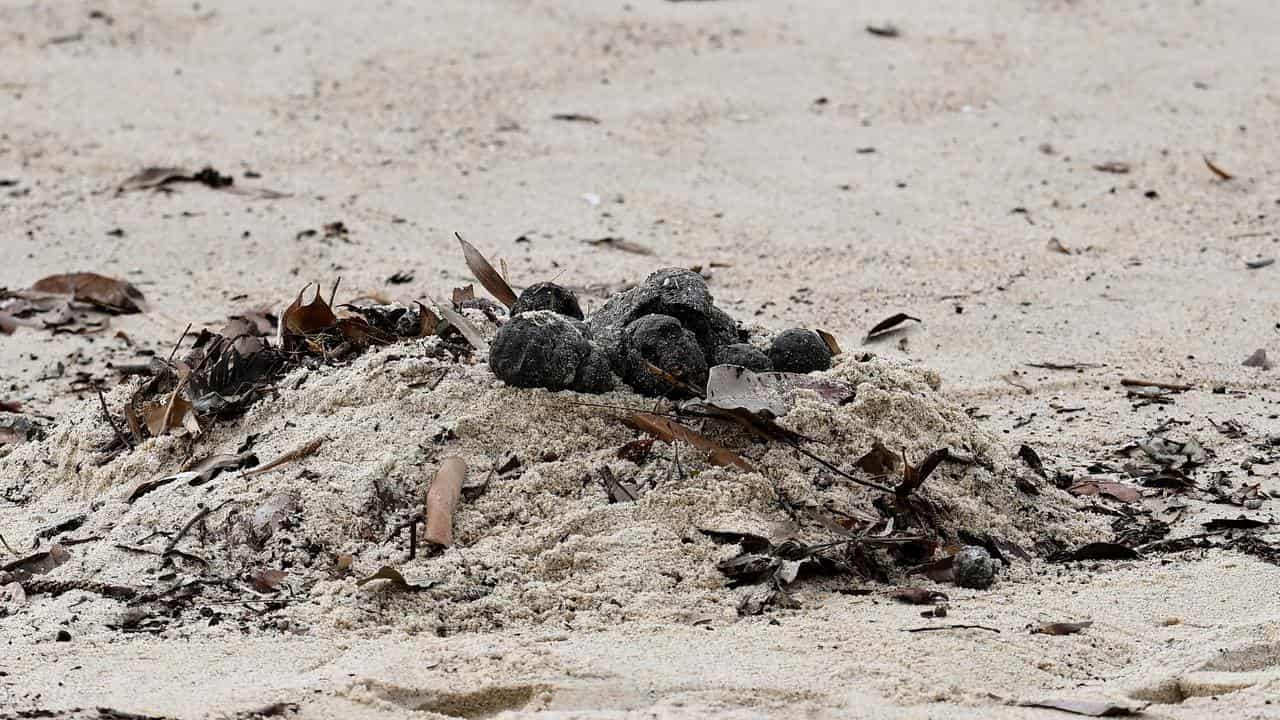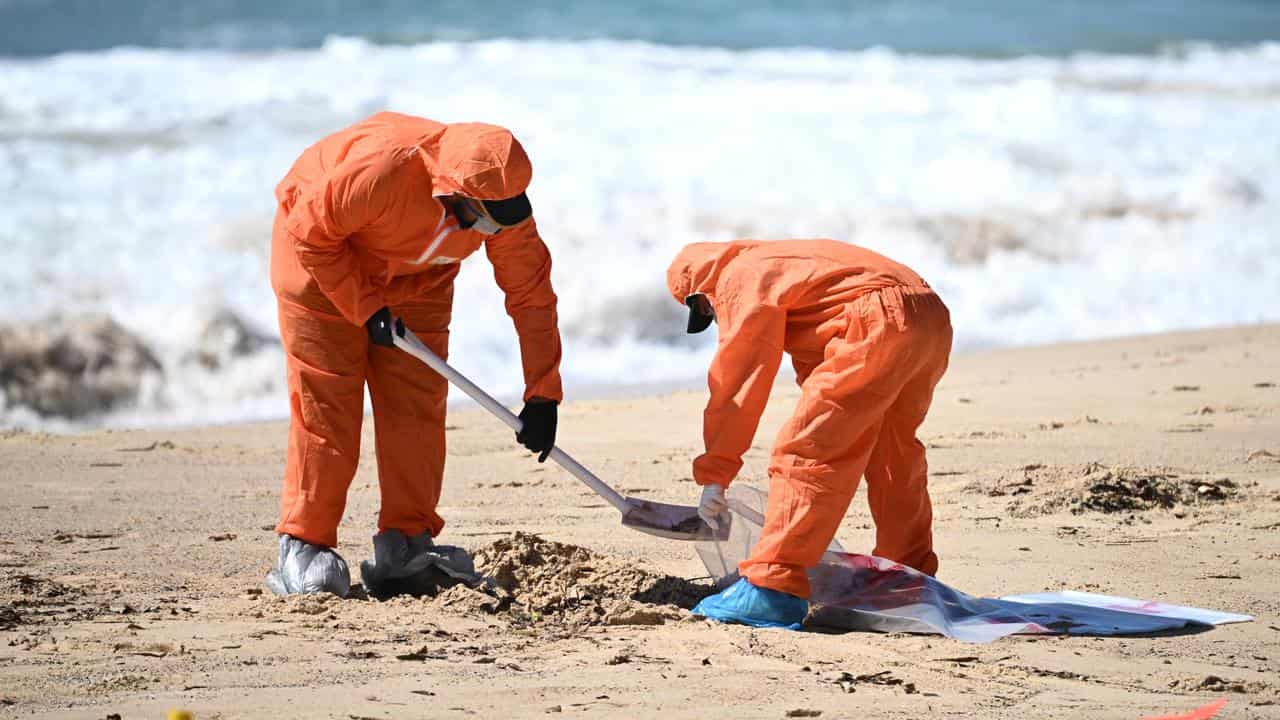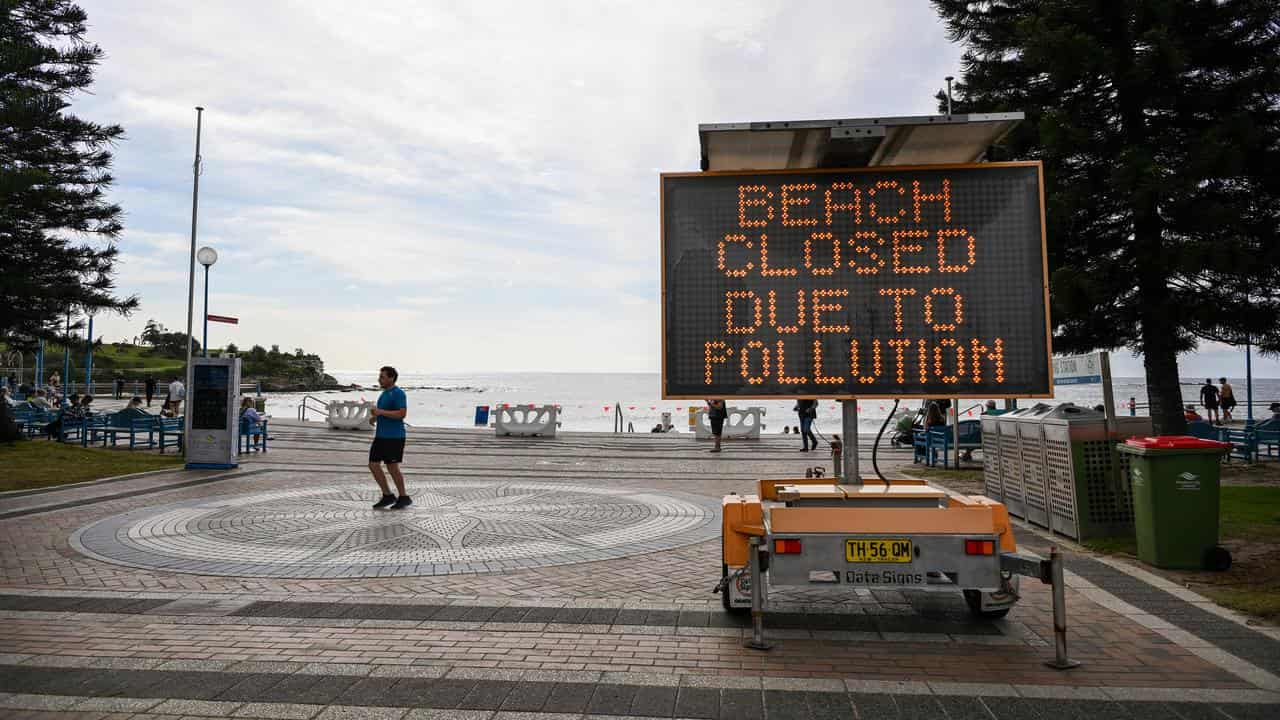
Mystery debris balls that washed up on the shores of some of Australia's most famous beaches likely came from the sewage network, but questions still remain.
Thousands of the black and grey balls, mostly the size of marbles, forced the closure of Bondi, Manly and other major Sydney beaches in late 2024 and early 2025.
Grandstanding politicians floated the possibility a passing oil tanker was to blame.
But the NSW environment authority on Friday suggested the real culprit was closer to home.
The composition of the balls collected off beaches matched samples taken from several of Sydney Water's wastewater treatment plants, the state Environment Protection Authority (EPA) said.
The watchdog ordered Sydney Water locate the precise source of the balls.
"The community are eager for answers," EPA operations manager Adam Gilligan said.
"This is a significant step forward in our investigation but there is still work to do."
The mystery balls first washed up on several beaches including Bondi Beach, Bronte and Coogee in October, forcing closures and a massive clean-up operation.
Test results revealed hundreds of materials from household fats to human hair made up the black balls, which resurfaced three months later along the city's northern beaches.

The authority's most recent investigation order requires Sydney Water assess treatment plants and investigate its sewerage pipe to prevent a recurrence.
Sydney Water on Friday said an independent expert it had commissioned had also identified its network or facilities as the probable source for the balls.
The expert did not find any faults in their system, manager Louise Beer said.
“It is important to note, all coastal treatment facilities are operating normally, and we are compliant with regulatory standards," she said.
The debris balls may have formed due to an increased load of fats, oils and grease over time combined with oceanographic factors and weather conditions playing a role, the investigation revealed.

No single origin point has been identified but the balls likely appeared over summer as a result of 10 or more separate discharge events.
“Keeping Sydney’s beaches and waterways clean is something we can all play a role in," Ms Beer said.
She suggested the community keep fats, oils, and greases out of drains and put them in the bin at home and at work.
Sydney Water will contribute to the cost of clean-up efforts and consider long-term infrastructure upgrades where needed, it said.
While experts said the balls are a low threat to health, the EPA advises the community to avoid touching debris and immediately report any new finds to their local council.




